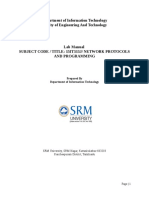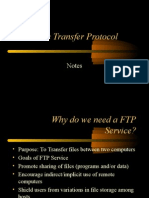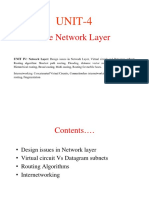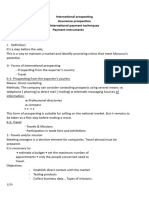0% found this document useful (0 votes)
225 views12 pagesComputer Network - Transmission Modes - Javatpoint
The document discusses different transmission modes used in communication including simplex, half-duplex, and full-duplex modes. Simplex mode allows communication in one direction only. Half-duplex allows communication in both directions but not simultaneously, while full-duplex allows simultaneous communication in both directions. Examples of each mode and their advantages and disadvantages are provided.
Uploaded by
kousarr294Copyright
© © All Rights Reserved
We take content rights seriously. If you suspect this is your content, claim it here.
Available Formats
Download as PDF, TXT or read online on Scribd
0% found this document useful (0 votes)
225 views12 pagesComputer Network - Transmission Modes - Javatpoint
The document discusses different transmission modes used in communication including simplex, half-duplex, and full-duplex modes. Simplex mode allows communication in one direction only. Half-duplex allows communication in both directions but not simultaneously, while full-duplex allows simultaneous communication in both directions. Examples of each mode and their advantages and disadvantages are provided.
Uploaded by
kousarr294Copyright
© © All Rights Reserved
We take content rights seriously. If you suspect this is your content, claim it here.
Available Formats
Download as PDF, TXT or read online on Scribd
/ 12
























































































